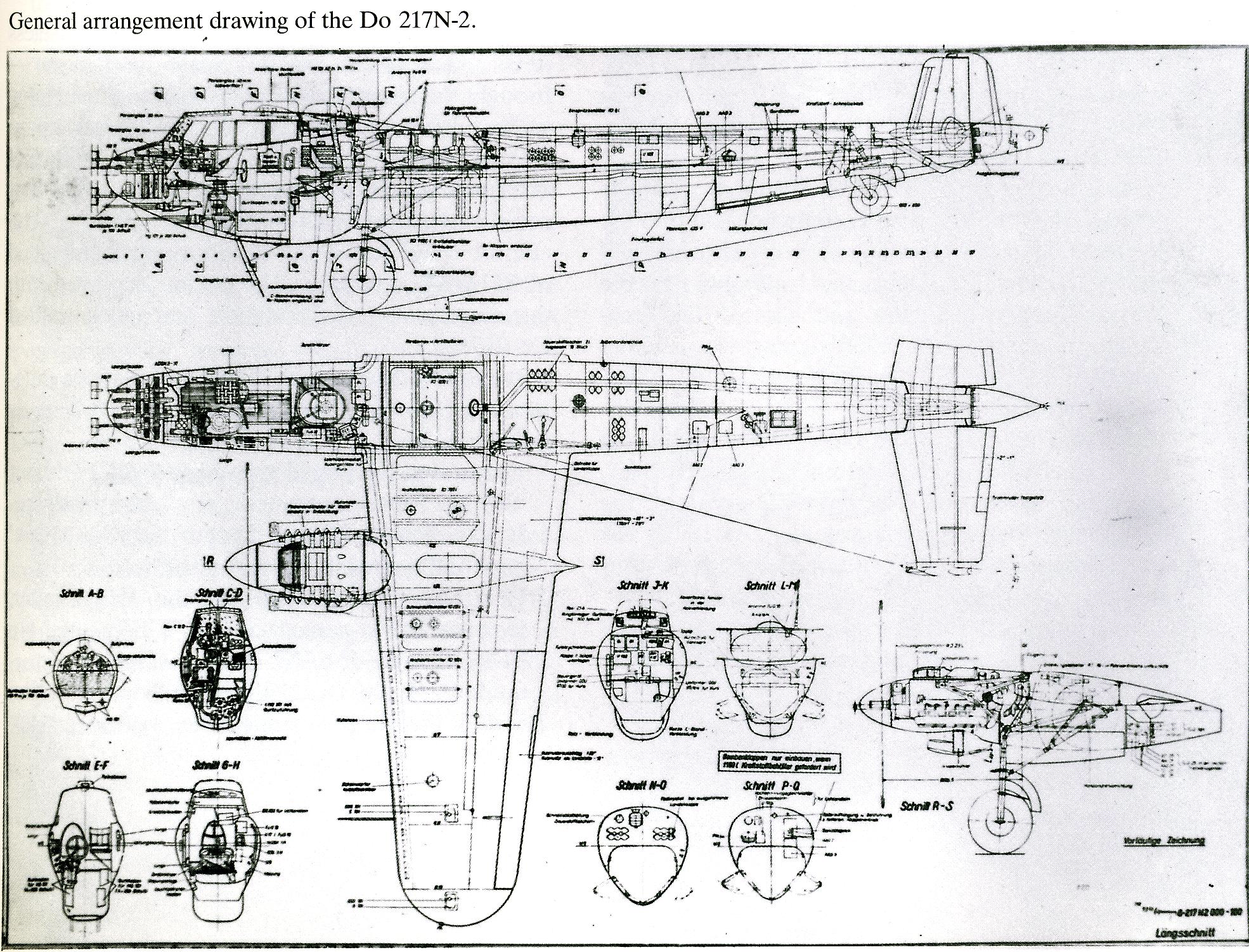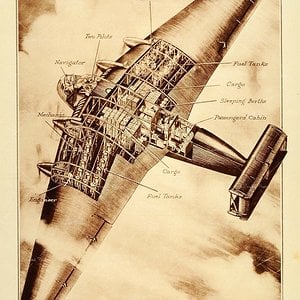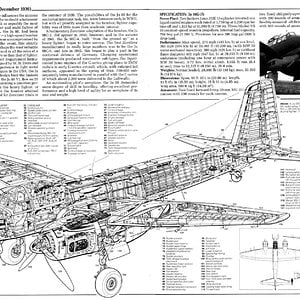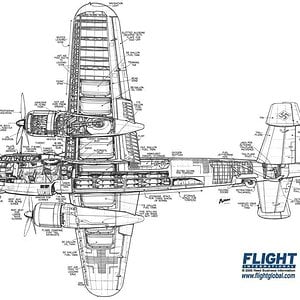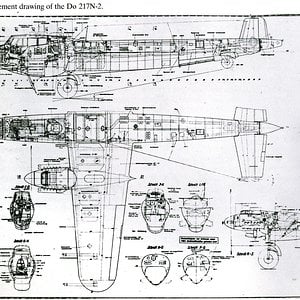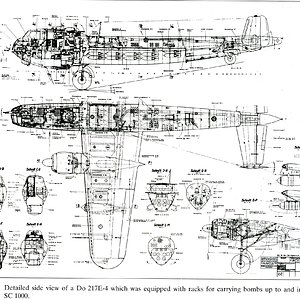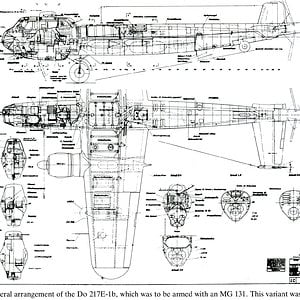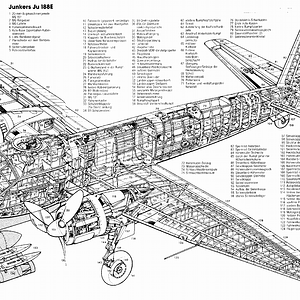Navigation
Install the app
How to install the app on iOS
Follow along with the video below to see how to install our site as a web app on your home screen.
Note: This feature may not be available in some browsers.
More options
You are using an out of date browser. It may not display this or other websites correctly.
You should upgrade or use an alternative browser.
You should upgrade or use an alternative browser.
N-1 and N-2After testing was satisfied the two variants, the N-1 and N-2, which had two sub-variants, were fitted with FuG 202. The N-1 variants were given two sub-variants which were to follow the design of the E-2/E-4 and the J-1/J-2 with emphasis on range and endurance. Extra fuel tanks were added to the empty bomb bay. For operations over water the heavy night fighters were fitted with lifeboats and radio transmitters. The FuG X with TZG 10 and FuG 16. IFF equipment was the FuG 25s. The N also had the FuG 101 radio altimeter, blind flying equipment FuB1 2 and PeilG V. AI search radar was the FuG 202. The no longer needed bomb release gear remained, bringing the aircraft up to 15,000 kilograms (33,000 lb) on take-off, so it was barely able to reach 7,400 metres (24,300 ft). Fuel consumption lightened the load, and the Dornier could reach a maximum operational ceiling of 8,400 metres (27,600 ft). The speed of the N was a maximum of 500 kilometres per hour (270 kn) at 6,000 metres (20,000 ft). The N-2 was much improved, as it was much lighter and refined.[83]
Overall the N-1 was an initial production of the J-1 version. Powered by a DB 603 it had similar armament to Do 217J-2, retaining defensive armament. Entered service in April 1943.[68] Some modified with dorsal and ventral guns replaced by wooden fairings as Do 217 N-1/U1, conversion with Schräge Musik arrangement of four upward-firing 20-mm MG 151s as Do 217 N-1/U3. About 240 built.[68]
The Do 217 N-2 was a new build equivalent of Do 217 N-1/U1; some were fitted with two or four cannon in Schräge Musik installation. About 95 were built[84] until it was retired from front line use in mid 1944.[85]
The N-2 was originally not to have the Schräge Musik armament configuration or a brake parachute, but it was then decided to fit the armament set for tactical reasons. A semi-rigid brake parachute was also installed for unspecified reasons. The N-2 prototype was a converted E-1, serial 0174, code PE+AW. The Dornier N-2 handbook gives the date of the aircraft's appearance as April 1944.[83] Communications were improved on the FuG 16 ZY and FuG 214. The B and C cupolas were removed and the positions fared over with Plexiglas and wood. The MG FF guns were replaced by MG 151/20 cannon. The MG 17s in the nose were abandoned with more powerful armament, but this was never carried out. To kill the excess weight that had plagued earlier types, the bomb bay, its doors, and the bomb release gear were removed, and changes were made to the control panels. The gaps were replaced by lighter wood parts which reduced weight, allowing heavier armour protection for the crew. The N variant was the most heavily armoured Dornier variant.[86] The improvements enabled a top speed of 525 kilometres per hour (283 kn) (an increase of 25 kilometres per hour (13 kn)) and a reduction from 15,000 kilograms (33,000 lb) to 12,500 kilograms (28,000 lb), which increased ceiling height to 9,500 metres (31,200 ft).[86]
Overall the N-1 was an initial production of the J-1 version. Powered by a DB 603 it had similar armament to Do 217J-2, retaining defensive armament. Entered service in April 1943.[68] Some modified with dorsal and ventral guns replaced by wooden fairings as Do 217 N-1/U1, conversion with Schräge Musik arrangement of four upward-firing 20-mm MG 151s as Do 217 N-1/U3. About 240 built.[68]
The Do 217 N-2 was a new build equivalent of Do 217 N-1/U1; some were fitted with two or four cannon in Schräge Musik installation. About 95 were built[84] until it was retired from front line use in mid 1944.[85]
The N-2 was originally not to have the Schräge Musik armament configuration or a brake parachute, but it was then decided to fit the armament set for tactical reasons. A semi-rigid brake parachute was also installed for unspecified reasons. The N-2 prototype was a converted E-1, serial 0174, code PE+AW. The Dornier N-2 handbook gives the date of the aircraft's appearance as April 1944.[83] Communications were improved on the FuG 16 ZY and FuG 214. The B and C cupolas were removed and the positions fared over with Plexiglas and wood. The MG FF guns were replaced by MG 151/20 cannon. The MG 17s in the nose were abandoned with more powerful armament, but this was never carried out. To kill the excess weight that had plagued earlier types, the bomb bay, its doors, and the bomb release gear were removed, and changes were made to the control panels. The gaps were replaced by lighter wood parts which reduced weight, allowing heavier armour protection for the crew. The N variant was the most heavily armoured Dornier variant.[86] The improvements enabled a top speed of 525 kilometres per hour (283 kn) (an increase of 25 kilometres per hour (13 kn)) and a reduction from 15,000 kilograms (33,000 lb) to 12,500 kilograms (28,000 lb), which increased ceiling height to 9,500 metres (31,200 ft).[86]

